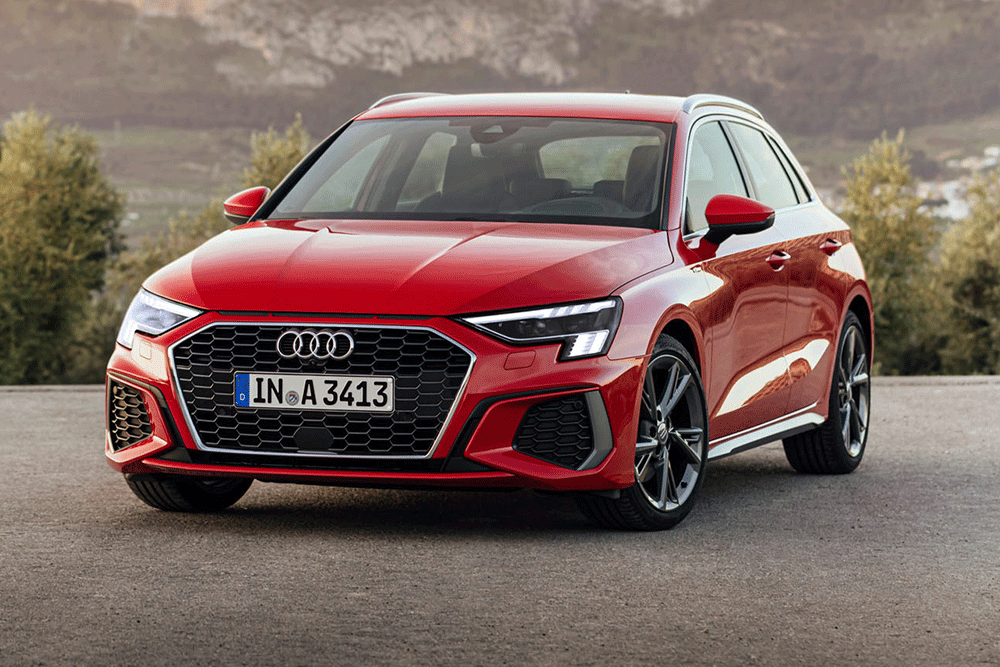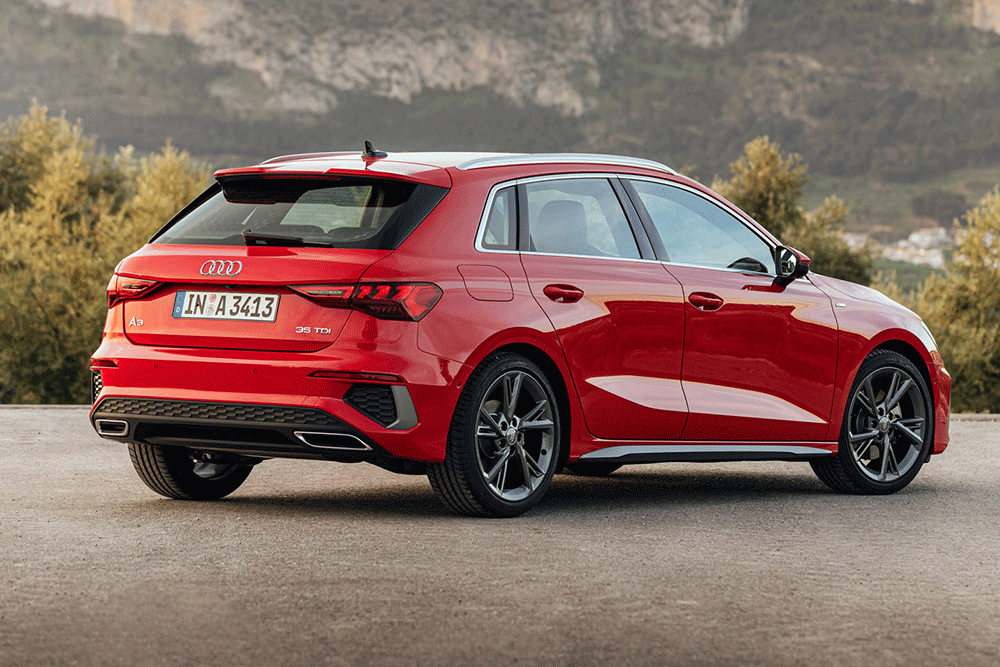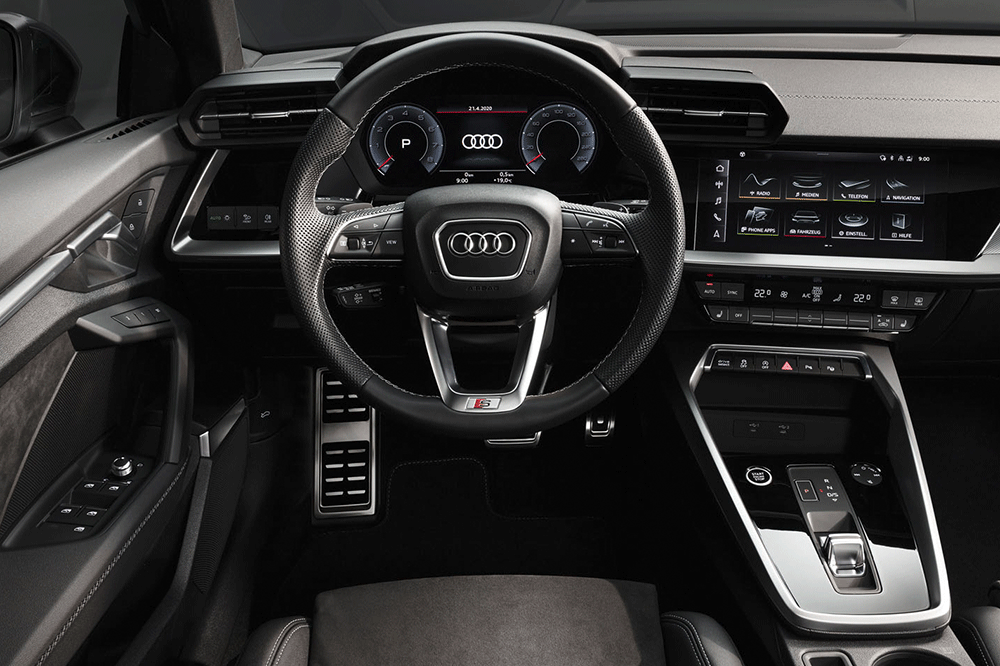Audi A3 35 TFSI Sportback review
The compact Audi A3 is a serious contender against rival premium small cars from BMW and Mercedes-Benz.

The compact A3 is a popular and affordable entry point into the Audi family of prestige vehicles and one of the brand’s most popular models.
Its S3 quattro sibling sits further up the price range to tempt those with a bent for something sportier and the extra cash to afford it.
Pandemic-related supply chain issues kept the latest version of the A3/S3 twins from Australian shores until early last year, despite the new model appearing in Europe as far back as 2020.
With supplies of the previous model long since exhausted, there was a collective sigh of relief from Audi’s local dealers when stock of the new and heavily re-engineered A3/S3 models finally landed.
So, was the long wait for this fourth-generation model worth it?
Having driven the sportier S3 at its local launch in March 2022 we said: “This is a thoroughly well-rounded and resolved package and the sort of performance car ordinary drivers could happily own and appreciate.”
That answers the question as far as the S3 variant goes and since then the even more-focused RS3 performance hero has arrived, stretching the range’s on-road price point to nearly $100,000.
At the more affordable end of the spectrum sits Audi’s entry-level A3 35 TFSI, available in both sedan and five-door hatch body styles, the latter referred to as Sportback in Audi parlance.
With a manufacturer’s recommended list price (MRLP) of $47,700, the 35 TFSI Sportback is priced $2,500 below its sedan sibling.
Sitting between this pair of 1.5-litre turbocharged 35 TFSI models and the more-potent S3 twins is the A3 40 TFSI Quattro S Line Sedan and Sportback, with larger 2.0-litre turbo-petrol engine, costing $57,200 and $54,700 respectively.
While prices for the new A3/S3 models have gone up over the old model, the new 35 TFSI remains highly competitive with key rivals such as the BMW 118i 1.5-litre turbo hatch and Mercedes-Benz A180 1.3-litre turbo hatch and sedan.
Audi’s premium compact also holds the aces when it comes to power, torque and fuel efficiency, besting its Germanic peers on all three metrics.
However, in the mainstream small car market there are some very well equipped and impressive offerings for similar or less cash, including the Mazda3 Astina, high-spec Hyundai i30 models and of course the closely related VW Golf.
Key standard equipment highlights on the 35 TFSI include 18-inch alloys, adaptive LED headlights, rear dynamic indicators, full keyless entry and start, power adjustable and heated exterior mirrors in body colour, power luggage compartment lid with gesture control (sedan only, option on Sportback), and dual-zone climate control.
Add to this, leather-appointed seats, leather-trim multi-function steering wheel with paddle shifters, electric park brake, tyre pressure monitoring and 40:20:40 split-fold rear seats, and you have a very generously appointed small car.
The A3 is also impressively safe, boasting seven airbags including a centre front airbag, Audi pre-sense front with AEB and pedestrian and cyclist detection, cruise control with speed limiter, lane departure warning and assistance, dusk sensing headlights, and rain sensing wipers.
Also standard, but unavailable at the time of writing due to ongoing supply-chain issues, are lane-change warning, exit warning, rear cross-traffic alert, perpendicular/parallel parking system and front/rear park system plus.

Audi said prices had been adjusted accordingly to allow for the omissions.
Independent safety testing authority, ANCAP, has awarded two-wheel drive variants of the A3 including the 35 TFSI tested here a five-star rating, but quattro AWD versions are currently unrated.
Inside, a refreshed version of Audi’s Virtual Cockpit – a fully digital high-definition instrument cluster with configurable screens – is fitted to all models.
Regular A3s feature a 10.25-inch display while the S3 scores a larger 12.3-inch version with additional S-specific functions.
Other 35 TFSI inclusions are DAB+ radio, wireless phone charging, Android Auto, wireless Apple CarPlay, six-speaker audio system and a neatly integrated 10.1-inch hi-res colour touchscreen.
The latter features MMI Navigation Plus with 3D map displays, natural language recognition, hand-writing recognition and acoustic feedback.
With its super-crisp graphics and 10 times more computing power than its predecessor, the system enables a full suite of Audi Connect Plus services for the first time on the A3.
This includes online traffic updates with hazard alert, weather conditions, fuel prices, destination entry via myAudi or Google Maps and parking information.
Additional functions enabled through the myAudi smartphone app, which relies on a vehicle-embedded SIM card, include remote vehicle lock/unlock, Audi service request, car finder with remote signal, emergency call and more.
Being the entry point into the range, the 35 TFSI has some notable equipment omissions including electric adjustable seats, lumbar adjustment and seat heating, all of which can be had if you option the bundled Comfort Package.
Even then, there remain some absent equipment basics, such as seatback map pockets, rear USB ports and power outlets that should be standard at this price point.
A spare wheel is also not available on any A3 model, with all variants featuring a mobility kit, comprising a compressor and can of tyre sealing goop.
The interior is neatly laid out, user friendly, and combines soft-touch surfaces, leather trims, and metal look dash inlays for a mostly high-quality look and feel. Occasional areas of hard plastic trim are reminders that this is the Audi you buy on a budget, rather than the premium finish the brand usually wows with.
At least the A3’s doors close with a reassuring ‘thunk’ that suggests solid build quality.
The exterior styling is sportier than its predecessor thanks to a wider, lower single-frame grille with distinctive honeycomb finish.
New LED headlights accentuate the A3’s width, while bolder wheel arches emphasise its purposeful stance.
Audi claim the new A3 Sportback offers more space than the previous iteration.
Height and wheelbase remain unchanged, but overall length has grown by more than 3cm, providing additional head and elbow room for front seat occupants.

For a small car, the A3 boasts reasonably good head, leg and foot space for rear passengers, though three adults across the rear would resemble canned sardines, and the centre rear seat is distinctly uncomfortable.
The Sportback’s load area isn’t cavernous, but at a quoted 380 litres (425 litres in the sedan), it’s practical enough to cope with a couple’s fortnightly grocery shop.
The three-way split rear seat flat-folds to expand for larger items.
This fourth-generation A3/S3 is described by Audi as an all-new model and, while it is extensively re-engineered, it still sits on the same VW group MQB platform as its predecessor.
However, the 35 TFSI is motivated by a new 1.5-litre TFSI petrol engine with cylinder-on-demand and a 48-volt mild hybrid system, designed to reduce fuel consumption and emissions.
It replaces the previous model’s smaller capacity and less fuel-efficient 1.4-litre TFSI engine although peak power and torque of 110kW/250Nm are unchanged from that model.
A belt alternator-starter feeds a 48-volt electrical system with an integrated compact lithium-ion battery located beneath the vehicle floor.
The system works mostly seamlessly, delivering an official fuel consumption saving of 0.4L/100km and helping the engine to a Euro 6 emissions rating.
The new engine offers solid response and feels enjoyably peppy, with a broad spread of maximum torque between 1,500–3,500rpm ensuring good driveability.
Audi claim 8.4 seconds for the standing start dash to 100km/h, which is a full 1.4 seconds behind the 40 TFSI Quattro model and 3.6 seconds adrift of the hotshot S3, but real-world performance feels better than the numbers suggest.
The 35 TFSI delivers its power to the front wheels via a seven-speed S-Tronic dual clutch transmission.
There are paddles and a sports mode for the gearbox, as well as a new shift-by-wire toggle style gear selector.
There’s a sporty edge to the 35 TFSI’s dynamics that keen buyers will find appealing. The ride quality has a typically Euro-taut feel that’s acceptably comfortable, if a little terse at low speeds.
Most will find it a reasonable trade, given the responsive and confident chassis dynamics, which make this small Audi an entertaining proposition on a challenging road.
One thing that won’t be so appreciated is the intrusive level of road and tyre noise on coarse chip road surfaces, which is one of the few areas where the A3’s otherwise impressive levels of refinement are found wanting.
A five-year/unlimited-kilometre warranty and five-year/75,000km comprehensive service plan costing $2,250 is category competitive.
In summary, this progressive evolution of the A3 will no doubt extend the nameplate’s appeal and be welcomed by prestige buyers who aspire to the four-ring German marque.
Key stats
- MLP: $47,700
- ENGINE: 1.5-litre turbo-petrol 4 cylinder/48V mild hybrid
- ANCAP CRASH RATING: 5 stars (2020)
- FUEL CONSUMPTION (combined cycle, litres/100km): 5.0 (114g/km CO₂)
- FOR: Solid performance and efficiency, build quality, handling, slick infotainment screen and Audi virtual cockpit.
- AGAINST: No spare – mobility kit, tyre/road noise detracts from overall refinement, firm low-speed ride, equipment omissions, price increases.
Related topics
Things to note
The information in this article has been prepared for general information purposes only and is not intended as legal advice or specific advice to any particular person. Any advice contained in the document is general advice, not intended as legal advice or professional advice and does not take into account any person’s particular circumstances. Before acting on anything based on this advice you should consider its appropriateness to you, having regard to your objectives and needs.
Insurance Products (excluding Travel Insurance) are issued by RACQ Insurance Limited ABN 50 009 704 152 (RACQI) and arranged by its agent, RACQ Distribution Services Pty Ltd (RDS) ABN 35 116 361 650, AFSL 567130 and RDS' authorised representatives (including RACQ Operations Pty Ltd ABN 80 009 663 414, AR No. 234978 (RACQO). Conditions, limits and exclusions apply. RDS and RACQO are in the RACQ group of companies. One of the companies in the RACQ group of companies has a minority shareholding in RACQI.
RDS and RACQO have not taken your personal objectives, circumstances or needs into account when preparing advice regarding insurance products and you will need to consider whether the advice is appropriate for you. Read the Product Disclosure Statement (PDS) and any applicable Supplementary PDS before making a purchase decision on this product. You can also access our Target Market Determinations on this website. RDS receives a commission from RACQI for the policies it arranges. RACQO receives fees paid for services it provides to RDS. Further details about remuneration are available on request prior to purchasing.
Banking and loan products issued by Members Banking Group Limited ABN 83 087 651 054 AFSL/Australian credit licence 241195 trading as RACQ Bank. Terms, conditions, fees, charges and lending policies apply. This is general advice only and may not be right for you. This information does not take your personal objectives, circumstances or needs into account. Read the disclosure documents for your selected product or service, including the Financial Services Guide and the Terms and Conditions, and consider if appropriate for you before deciding.
Except for RACQ Bank, any RACQ entity referred to on this page is not an authorised deposit-taking institution for the purposes of the Banking Act 1959 (Cth). That entity’s obligations do not represent deposits or other liabilities of RACQ Bank. RACQ Bank does not guarantee or otherwise provide assurance in respect of the obligations of that entity, unless noted otherwise.
RACQ Bank subscribes to the Customer Owned Banking Code of Practice which establishes higher standards than the law requires. The Code reflects modern consumer expectations and developments in approaches to issues such as consumer vulnerability, guarantors, and supporting customers through financial hardship. Please read our Customer Owned Banking Code of Practice page for more information.
RACQ Operations Pty Ltd (ABN 80 009 663 414 AR 000234978) and Members Travel Group Pty Ltd (ABN 45 144 538 803 AR 000432492) are acting as an Authorised Representative of the issuer of the insurance, Tokio Marine & Nichido Fire Insurance Co., Ltd. (ABN 80 000 438 291 AFSL 246 548). Any advice set out above is general in nature only, and does not take into account your objectives, financial situation or needs. Before purchasing any travel products, please consider the RACQ Travel Insurance Product Disclosure Statement (PDS) and the Target Market Determinations (TMDs) that apply to these products. Whilst the PDS outlines the Terms and Conditions of these products, the TMDs outline the intended class of customers that comprise the target market for these travel products. This will allow you to consider which products best suit your objectives, financial situation and needs and consider the products appropriateness to your personal circumstances. TMDs also outline matters involving the distribution and the review of these products. The PDS, Supplementary PDS and TMDs for each travel product can be found here.
